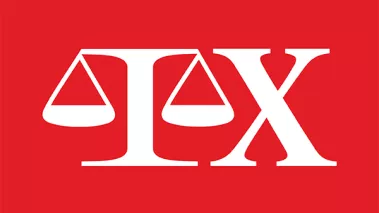Table of Contents
What does ‘Davis’ harassment look like? Here’s an example.

FIRE frequently highlights Davis v. Monroe County Board of Education, the 1999 Supreme Court decision articulating the standard for student-on-student harassment: targeted, discriminatory conduct that is “so severe, pervasive, and objectively offensive, and that so undermines and detracts from the victims’ educational experience, that the victim-students are effectively denied equal access to an institution’s resources and opportunities.”
There is no shortage of FIRE analysis of why this standard should be used nationwide at public colleges and universities and at private institutions that promise freedom of expression. And FIRE has documented too many cases where students were censored and punished for protected expression under overbroad harassment policies.
Is the standard so high that only speech accompanied by egregious physical acts could qualify?
The Davis standard is an exacting one because it is critically important that universities, especially, are places where individuals can voice their opinions and have robust discussions on controversial topics. But just as importantly, Davis requires institutions bound by Title IX — which includes the vast majority of U.S. colleges and universities — to respond to allegations of behavior that unlawfully interferes with someone’s access to education because of their sex, and that would have such an effect on a reasonable person in their shoes.
But what does that type of conduct look like? After all, the Davis case itself involved physical assault, in addition to offensive remarks. Is the standard so high that only speech accompanied by egregious physical acts could qualify?
We don’t think so. Earlier this year, a University of Maryland student was arrested for “electronic mail harassment” and “telephone misuse,” among other charges. Without more information, we wondered whether he may be at risk of punishment for protected speech, and we filed a public records request to find out. Last week, FIRE finally received police and court documents specifying the student’s alleged behavior.
According to the arrest warrant application, on Dec. 10, the student messaged a fellow student via GroupMe, asking if she was Jewish and then “send[ing] her several messages that harassed her because of her Jewish faith.” On Dec. 12, he again messaged her “disparaging her for her Jewish faith.” On Dec. 17, more of the same, even after she wrote to him, “Please stop texting me.” He continued to message her on Dec. 20 and Jan. 8. On Jan. 11, he “told her that he was going to find her home address, name, and face and post it to an online list.”
Davis is a high standard, but it is not unreachable.
In other words, he targeted her because of her religion, and he wouldn’t leave her alone, even after weeks, and even after she made clear that his messages were unwelcome. A reasonable student in her position could easily conclude that without intervention, this pattern of conduct would continue and escalate further. And because these messages started when she joined a GroupMe chat related to one of her courses, she reasonably could conclude that she could not participate in class-related discussions with her peers without potentially being hit with a barrage of insults focusing on her religion.
Perhaps some particularly resilient students would be willing and able to ignore those messages and would not be deterred from fully participating in GroupMe class discussions. But many — and not only the university’s most sensitive students — would likely feel they need to curb their use of the GroupMe app to avoid further messages of this sort.
This example illustrates the impediment to equal access to educational opportunities that Davis contemplates, and there is no First Amendment violation in punishing a student who creates such an impediment.
Davis is a high standard, but it is not unreachable. Universities have a legal obligation to respond where students reasonably are not able to participate in class discussions and campus activities as their peers are.
Recent Articles
Get the latest free speech news and analysis from FIRE.

FIRE's 2025 impact in court, on campus, and in our culture

The trouble with banning Fizz

VICTORY: Court vindicates professor investigated for parodying university’s ‘land acknowledgment’ on syllabus
